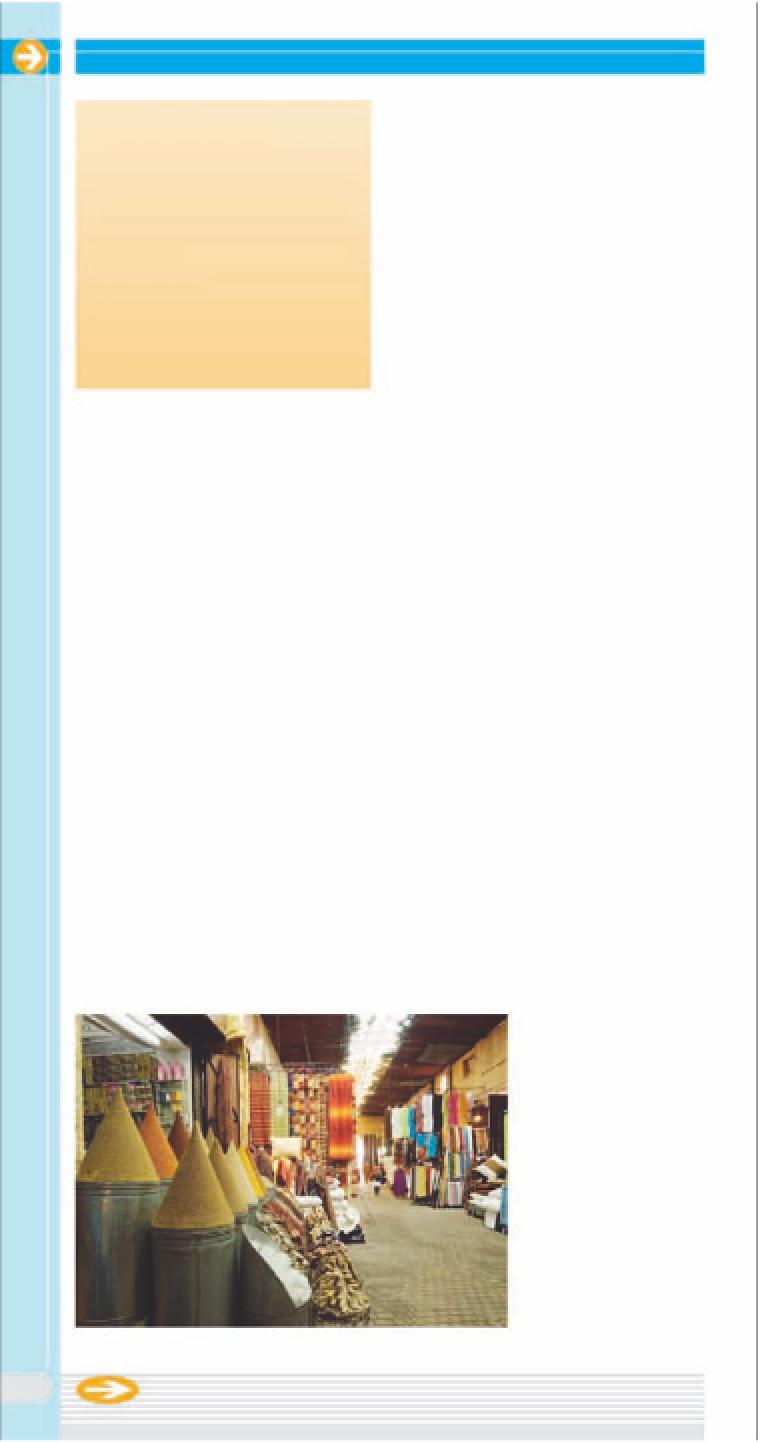Travel Reference
In-Depth Information
approached by a long garden
driveway. Inside, arrows direct
visitors through a succession of
courtyards and private rooms
that were used by the vizier and
his four wives. All the rooms are
lavishly decorated with
zellij
tiling
(see p36)
, sculpted stucco and
carved cedarwood. The ruling
sultan, Abdel Aziz, was so
jealous of the riches of the Bahia
that on the vizier's death he had
the palace stripped and looted.
d
Map K5 • Rue Riad Zitoun El Jedid
• 0524 38 91 79 • Open 8:45-11:45am,
2:45-5:45pm Sat-Thu, 8:45-11:30am,
3-5:45pm Fri • Adm
The King and his Palaces
Throughout Moroccan history, the
royal court has shifted base
between Fès, Meknès, Rabat and
Marrakech. The Almohads furni-
shed Marrakech with its first royal
palace south of Jemaa El Fna in
the 12th century and it's been
there ever since. The present King
Mohammed VI had a smaller
palace built for his personal use,
outside the Bab Agnaou.
^
Mellah
The old Jewish quarter lies
immediately east of the kasbah.
You can enter via the Souk El
Bab Salaam, a busy, covered
market street across from a
rose-planted square. This street
leads to Place Souweka and just
to the north you'll find one of the
city's last working synagogues.
Most of the Jewish population of
Marrakech left for Israel after the
Second World War, in the 1940s
and 1950s, but the number of
graves in the nearby Miâara
Jewish cemetery is testament to
how many there once were.
d
Map L5
*
Rue Riad Zitoun El Jedid
A long arcing alley which
translates as the “Street of the
New Olive Garden , this is
another main route through the
southern part of the medina. It
connects several major sights
with Jemaa El Fna, including
the Bahia Palace and Dar Si Said
Museum. You will also come
across the small
derb
(alley) that
leads to Riad Tamsna, a rest-
aurant, gallery and boutique,
housed in a beautiful old court-
yard building that has upper
galleries and a roof terrace.
d
Map K4 • Riad Tamsna: 23 derb Zanka
Daika • 0524 38 52 72 • Open noon-
midnight daily
&
Bahia Palace
Built in the 1890s by a
powerful grand vizier (high
official), the Bahia (“Brilliant”) is
a minor palace complex
(
Dar Si Said
Museum
Built by the brother
of Ba Ahmed,
builder of the Bahia
Palace, this is an
altogether more
modest dwelling.
However, what it
sacrifices in scale, it
makes up for in its
impressive detailing
- the house has
some beautiful
Souk El Bab Salaam
62


































